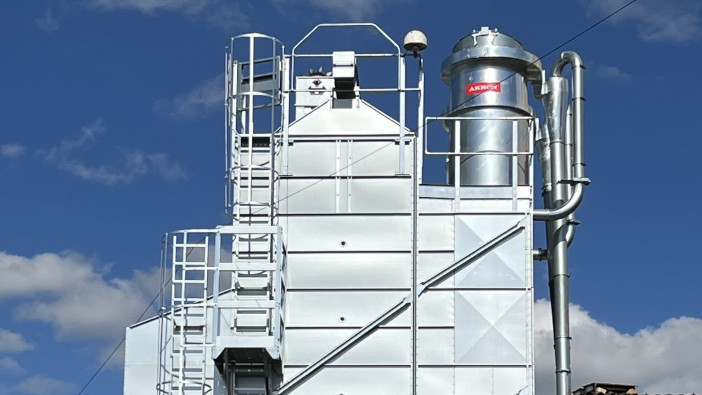In 2021, the grain drier used by WF Wells and Sons caught fire. The third-generation farm, run in partnership by five brothers, grow oilseed rape, winter wheat and barley, spring barley and maize, as well as running a dairy and beef herd.
“The drier caught fire as a result of an accumulation of dust. The dry weather meant that the crop was particularly dusty and dirty and the location of the drier, which had been installed in a tight space, meant that it was dragging in dust-laden air which was settling on the burner tubes,“ explained Andrew Wells.
“After the fire, I called Andrew Head, sales director, BDC Systems Ltd, with whom I have a long-standing and trusted relationship. He quickly confirmed the cause of the fire, which coincidentally aligned exactly with the view of my insurer.”
The new drier had to be fitted into the same tight space as the previous unit, with the top of the drier protruding through the roof of the grain shed. The brothers worked closely with Mr Head to re-design the plant to minimise the risk of fire.

On Mr Head’s recommendation, and following discussions with insurers, it was decided to install a Svegma 37 tonnes per hour continuous flow drier with a 4m footprint. To ensure this fit into the same footprint as the previous machine, it was rotated 180 degrees, which also enabled dust-free air to be drawn into the furnaces.
Grain is now tipped into the large gravity discharge intake bunker, from which it is elevated via an existing belt and bucket elevator and dropped through an Aagaard aspiration pre-cleaner to remove dust and chaff.
Product is then transported via a Skandia SEI35/14, belt and bucket elevator which feeds a Skandia KTIFFR20/33 flow and return conveyor, to the Svegma drier. Overflow grain flows back via gravity to the intake bunker.
The Svegma is fitted with vertical turbo clean dust extraction fans, with extracted dust pneumatically conveyed to a dust box with a Konskilde TLR blower. The drier discharges through a Skandia KTIFb2033 chain and flight conveyor, with grain being transported through an existing cleaner or direct to store.
The Wells family also chose to deploy BDC’s Moisture Monitoring System (MMS) to monitor the moisture content of the crop going in and out of the drier. Should this fall or rise below the predefined levels, an email or text alert is sent to allow changes to be made remotely.
It was also supplied with the PLC touchscreen control panel, enabling the family to remotely view and adjust drier settings as well as log all drier data. This was configured to allow the Wells to apply a chemical to prevent grain beetle infestation, using an existing applicator.
“The upgraded plant is a dream to use,” said Andrew Wells. “I dared not leave the old drier in case there was an issue. Now I am no longer tied to the grain shed during harvest. The remote access to the control panel means that I can log in and check what’s happening and make any modifications, including shutting the plant down, regardless of where I am.”
“Andrew Head even provided the answer to the challenge we first struggled with. How to extract the grain from the fire-damaged drier – he took one look and told us to get a demolition team in!” he added. “We did and they were brilliant, dismantling the drier without damaging the shed itself, leaving the way clear for the installation of the new plant!”


